HDcctv: The Third Way
HDcctv is a new digital camera interface technology bringing uncompressed HDTV to surveillance monitors for the first time. HDcctv joins CCTV and IP network video as a third camera...
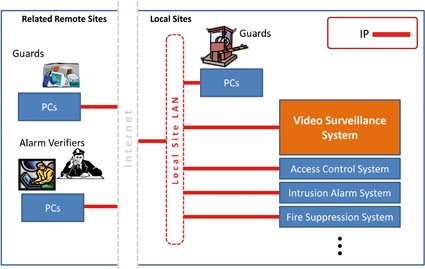

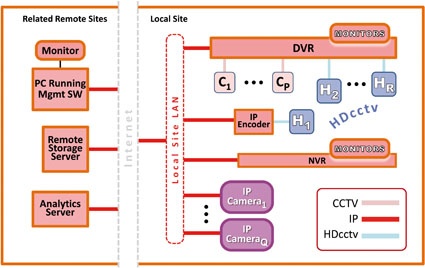
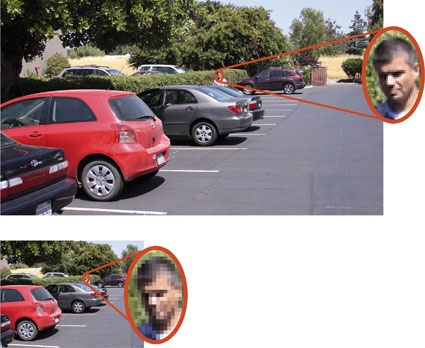
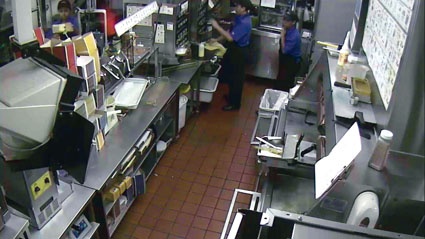
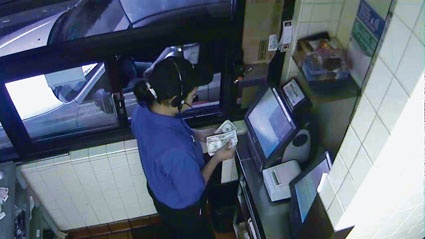

HDcctv is a new digital camera interface technology bringing uncompressed HDTV to surveillance monitors for the first time. HDcctv joins CCTV and IP network video as a third camera interface technology option for use in video surveillance systems.
The choice of camera interface technology has a surprisingly significant impact on the cost-effectiveness and value of a physical security system. This article introduces HDcctv and compares and contrasts it with CCTV and IP network video. HDcctv allows the installed base, as well as new installations, to reap the benefits of megapixel surveillance at lower cost and greater convenience than was heretofore possible. HDcctv represents a great business opportunity for video surveillance equipment dealers, because every existing CCTV customer is a candidate for an upgrade to high-resolution surveillance with the simple addition of some HDcctv cameras along with a complementary DVR and/or IP encoders. In addition to its appeal to the small CCTV customer, HDcctv is potentially indispensible to designers of large-scale physical security systems: Even where IP networking is the integration fabric, HDcctv provides highest-quality camera video feeds at minimum costs of equipment, installation, and operation.
The HDcctv Alliance is the non-profit global consortium formed to develop and promulgate the HDcctv standard that assures the interoperability of high-definition, closed-circuit television equipment. The goals of the Alliance are to encourage surveillance system developers to consider HDcctv equipment in upgrading existing surveillance systems and in designing new ones, and to reduce the risk to manufacturers entering the industry.
Video Surveillance System Architecture
Figure 1 gives an overview of a remotely managed physical security system, which provides for services (such as guarding and monitoring) as well as physical systems (e.g., video surveillance, intrusion alarms, access control, and fire suppression). The video surveillance system itself includes devices such as cameras, DVRs, network equipment, monitors, remote servers, and PCs running video management software.
While conventional video surveillance systems are based entirely on CCTV cameras, Figure 2 depicts a modern video surveillance system that includes IP as well as CCTV cameras (with Ci denoting a CCTV camera). Various devices are inter-connected over a variety of media in the video surveillance system. Each camera is connected to one other device, for example a repeater, DVR, router, encoder, NVR, etc. The camera interface technology includes the specification for signaling between the camera and its paired device.
Figure 3 depicts a new kind of video surveillance system incorporating IP, CCTV and newly available HDcctv cameras, with Ci denoting a CCTV camera and Hj denoting an HDcctv camera.
Cost effectiveness is a paramount goal in designing a physical security system. Since the video surveillance component accounts for a large share of the system's perceived security value and commands a majority of the system's budget, its cost-effectiveness is critically important in the overall architecture of the physical security system. The choice of camera interface technology has significant implications for the cost-effectiveness of the video surveillance system.
The Three Camera Interface Technologies: CCTV, IP Network Video, HDcctv
IP network cameras have heretofore been a compulsory alternative to CCTV cameras if megapixel resolution is a surveillance requirement. The important differences between CCTV and IP network video are the transmission format and the physical medium. Typically, CCTV delivers analog television signals over coaxial cable, whereas IP network video delivers sequences of packets of compressed video representations over Cat-X cable.
HDcctv, the new alternative, delivers digital HDTV signals over coaxial cable at rates of 1.5 Gb/sec. HDcctv cameras directly re-use the coaxial cables of existing CCTV installations while digitally delivering, for example, 2-megapixel frames at 30 frames per second. Thus, HDcctv is an appealing alternative for the video surveillance system designer as it offers higher resolution than CCTV at similar cost, while preserving the CCTV infrastructure and operating interface. This means that an upgrade to HDcctv potentially requires no new cabling and little or no training of installers and operators. Thus, HDcctv delivers high resolution at greater convenience and lower cost than a transition to megapixel IP network cameras. Moreover, HDcctv cameras deliver highest-quality images which are not compressed for transmission.
The HDcctv Standard
Version 1.0 of the HDcctv standard adopted by the HDcctv Alliance specifies SMPTE-compliant HDTV signals (720p25, 720p50, and 1080p25) over conventional coaxial cable. (For reference, a 1080p image contains about 2 million pixels.) Version 2.0 of the HDcctv standard is being developed to provide for signal transmission over 300 m of RG-59 coax or 100 m of Cat-5e, definition of a physical layer for optical fiber, bi-directional exchange of control information, bi-directional audio, and even up-the-cable power.
Which Camera Interface Technology Is Best?
The customer's needs determine the video surveillance system requirements, including the resolution, frame rate, fidelity, and duration of stored video, search capabilities, analytics, and the means for controlling the system. There may be no one type of camera interface technology that best fits the needs of all applications. When specifying camera upgrades, system designers usually base the choice for each camera on economic considerations.
Since CCTV is the camera interface technology in the vast majority of installed video surveillance systems, a design objective in upgrading many physical security systems is to preserve the existing CCTV infrastructure, in particular the coaxial cables and as many cameras as possible. HDcctv meets this objective. Video system designers have CCTV cameras, IP network cameras, and now HDcctv cameras at their disposal. The video system that provides the required forensic evidence at least cost may include a mix of all three types of cameras.
The predominance of CCTV in the video surveillance installed base means that many pragmatic buyers are reluctant to adopt IP network video cameras because for them new CCTV cameras are more convenient to install and less expensive than IP network cameras. However, while CCTV offers compelling economic advantages for standard-resolution video, CCTV has a practical resolution limit of 540HTVL, and most CCTV cameras are capable only of very low vertical resolution. A need to exceed these limitations prompts the search for higher-resolution alternatives. IP networking imposes no fundamental limit to image resolution; therefore for some applications, the resolution advantage of megapixel network cameras justifies the inconvenience and cost of switching to IP networking. However, many potential buyers who want higher resolution appear to be waiting for an easier way to upgrade their existing CCTV systems.
Video surveillance system architects recognize that network-enabled DVRs are sometimes more cost-effective network edge devices than cameras. That is, a DVR can serve as an effective terminal of the IP network (whether Internet or LAN) linking the video surveillance system to the other elements of the physical security system. Such a DVR removes the requirement to extend the network itself to each (or any) camera. Thus, upgrading a CCTV system to HDcctv is as convenient as replacing or adding a CCTV camera while upgrading the DVR.
The latency of signal transmission across an HDcctv interface is imperceptible, whereas the latency of signal transmission across an IP network video interface is appreciable, due to the compression performed by IP network cameras prior to transmission. The low latency of HDcctv interfaces is a distinct advantage for applications requiring megapixel-resolution speed (PTZ) domes.
Moreover, IP networking incurs a variety of costs beyond those typically associated with CCTV or HDcctv. One often-overlooked cost of IP network video for the camera interface is that IP is designed to tolerate varying packet transmission delays and even packet loss. Of course, video surveillance requires uninterrupted delivery of the video signal. Typically, an IP network that can guarantee zero packet loss is a relatively expensive one.
At equivalent resolution, CCTV cameras deliver higher-quality video than IP network cameras, because CCTV video does not suffer from the impairments introduced by significant compression. HDcctv cameras also transmit video that is free from video artifacts introduced by the significant compression performed by IP network cameras. But HDcctv cameras deliver true 720p25, 720p50, and 1080p25 signals, which represents a distinct resolution advantage over CCTV.
HDcctv has an advantage over both CCTV and IP network video with respect to the complexity of the standard itself. Interface standards are valuable because they obviate buyers' potential concerns about interoperability, thereby increasing sales, while reducing manufacturers' risks associated with entering the market, ultimately minimizing product prices. To the chagrin of product manufacturers, CCTV encompasses a variety of transmission standards: NTSC, PAL, SECAM, etc. To the frustration of integrators and installers, there is an even greater variety of IP network video transmission standards, which, along with a great diversity of control interfaces for IP network cameras, presents significant interoperability risk to the end customer. Meanwhile, as a unified global standard managed by the HDcctv Alliance, HDcctv presents a less complex array of formats than either CCTV or IP network video. The HDcctv Alliance aims to make the HDcctv standard rich in features yet inexpensive to implement.
As the HDcctv industry matures, HDcctv equipment should become available at cost points similar to good-quality CCTV equipment. For these reasons, it is timely for video surveillance system designers to consider specifying HDcctv in new projects. Designers should be aware that only products bearing the distinctive HDcctv logo are certified as complying with the HDcctv standard. The logo assures buyers of product interoperability.
Applications of HDcctv
HDcctv should be considered for any situation or application requiring high-resolution video. HDcctv is especially appealing for upgrades of existing CCTV systems. HDcctv Alliance members report applications of prototype HDcctv equipment around the world, from individual jewelry shops to municipal highway safety to a national postal service.
One HDcctv Alliance member's customer is taking advantage of prototype HDcctv cameras in a chain of fast-food restaurants (see pictures 1 and 2). The end customer owns four drive-thru stores, representing an existing investment of 26 CCTV cameras and 4 DVRs. The customer is able to access the DVR in each store via the Internet. The customer had been thinking about upgrading his DVRs to take advantage of H.264 compression. While he did not want to change the whole infrastructure over to IP networking, the customer had also been requesting higher-resolution video on some camera views. HDcctv cameras immediately delivered the desired upgrade, without changing the security system in any fundamental way: the installer had only to set up the new DVR in each restaurant, unscrew the old cameras, and screw in the HDcctv cameras. The technicians were delighted with the ease of installation and commissioning, while the owner was able to negotiate for lower insurance rates due to the improved surveillance quality.
As another example, the Gaming Commission of the U.S. state of South Dakota recently sanctioned prototype HDcctv equipment for use in casinos. Several systems have been installed. The customer determined that upgrading some cameras to HDcctv delivered a better economic return than the conventional path of replacing the cameras with newer CCTV cameras. It is worth noting that the customer did not consider changing over to an IP networking infrastructure. The end customer reports having increased his ability to monitor and prosecute table fraud: high-fidelity uncompressed images delivered at high frame rates make it much easier to identify and prosecute fraud. Also, the greater pixel coverage achieved per camera with HDcctv, along with the wider 16:9 aspect ratio, reduces the total number of cameras needed to cover some gaming pits.
Take-away Message for the Video Surveillance Equipment Dealer
Every CCTV customer contemplating a DVR upgrade is a candidate for the addition of some HDcctv cameras. The target market is the installed base, in which many cameras lack sufficient image resolution for modern surveillance requirements. It may be that a substantial fraction of the installed base is reluctant to pay for the IT overhaul needed to accommodate IP network cameras but would be eager (after a simple demo) to obtain HDcctv cameras while in the process of replacing the DVR anyway.
Take-away Message for the Physical Security System Designer
Even if the physical security system relies on IP networking for integrating its various services and systems, choosing HDcctv instead of IP networking for the high-resolution cameras introduces true HDTV video at lower costs of equipment, installation, and operation. This disparity is especially pronounced for those existing CCTV systems for which HDTV resolution is required only on some camera views. HDcctv is not intrinsically expensive, so any designer specifying high-resolution video should consider HDcctv. Some scenes may best be covered by HDcctv cameras, even if not all are.
Business Partner
HDcctv Alliance Ltd.Holgate NSW 2250
398 Wattle Tree Road
Australia
most read


Is Your Venue Ready for Martyn’s Law?
Martyn’s Law demands stronger security by 2027. Is your venue prepared to protect and respond?

Airbus Defence and Space: Security as a strategic pillar of Europe's defense capability
Airbus Defence and Space protects sites, technologies and employees with modern security and cyber solutions - strengthening Europe's resilience in uncertain times

The Benefits of AI-based Video Surveillance Solutions for Sports Venues
Dallmeier Interview: Artificial intelligence Makes Stadiums Smarter

GIT SECURITY AWARD 2026 - The winners have been announced!
GIT SECURITY AWARD 2026: The best safety and security solutions of the year - now an overview of all winners








